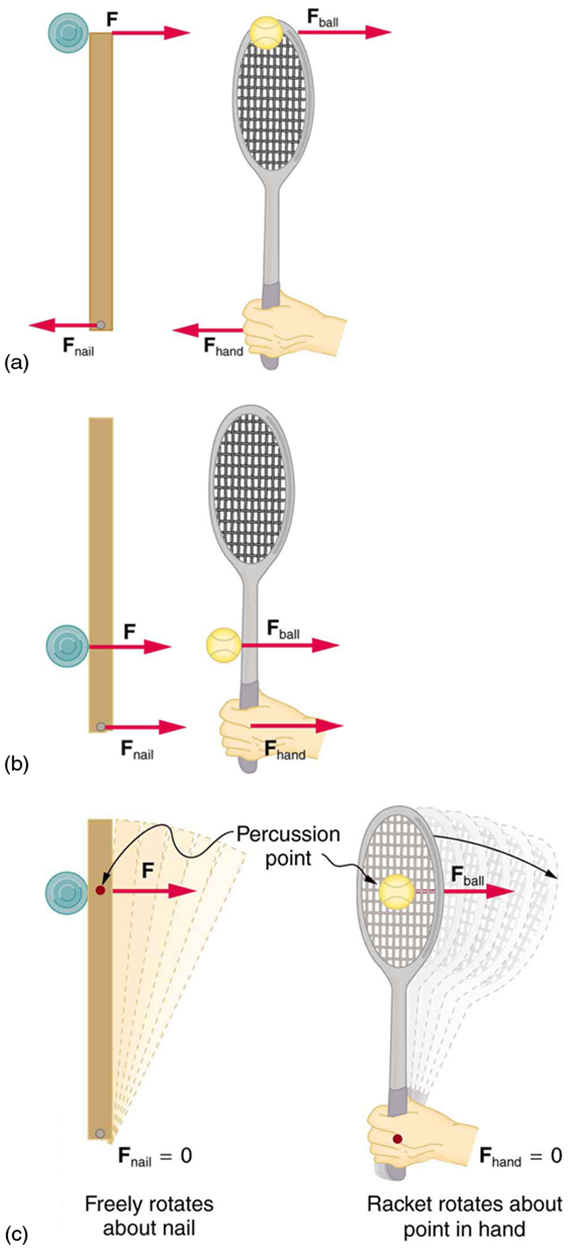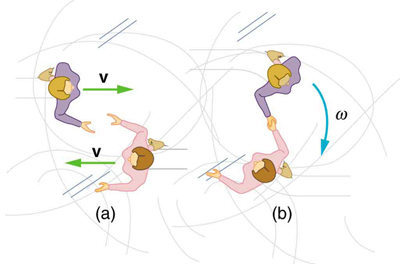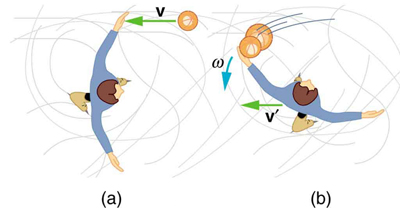| << Chapter < Page | Chapter >> Page > |

Is rotational kinetic energy a vector? Justify your answer.
No, energy is always scalar whether motion is involved or not. No form of energy has a direction in space and you can see that rotational kinetic energy does not depend on the direction of motion just as linear kinetic energy is independent of the direction of motion.
Describe two different collisions—one in which angular momentum is conserved, and the other in which it is not. Which condition determines whether or not angular momentum is conserved in a collision?
Suppose an ice hockey puck strikes a hockey stick that lies flat on the ice and is free to move in any direction. Which quantities are likely to be conserved: angular momentum, linear momentum, or kinetic energy (assuming the puck and stick are very resilient)?
While driving his motorcycle at highway speed, a physics student notices that pulling back lightly on the right handlebar tips the cycle to the left and produces a left turn. Explain why this happens.
Repeat [link] in which the disk strikes and adheres to the stick 0.100 m from the nail.
(a)
(b)
(c)
Repeat [link] in which the disk originally spins clockwise at 1000 rpm and has a radius of 1.50 cm.
Twin skaters approach one another as shown in [link] and lock hands. (a) Calculate their final angular velocity, given each had an initial speed of 2.50 m/s relative to the ice. Each has a mass of 70.0 kg, and each has a center of mass located 0.800 m from their locked hands. You may approximate their moments of inertia to be that of point masses at this radius. (b) Compare the initial kinetic energy and final kinetic energy.

(a) 3.13 rad/s
(b) Initial KE = 438 J, final KE = 438 J
Suppose a 0.250-kg ball is thrown at 15.0 m/s to a motionless person standing on ice who catches it with an outstretched arm as shown in [link] .
(a) Calculate the final linear velocity of the person, given his mass is 70.0 kg.
(b) What is his angular velocity if each arm is 5.00 kg? You may treat the ball as a point mass and treat the person's arms as uniform rods (each has a length of 0.900 m) and the rest of his body as a uniform cylinder of radius 0.180 m. Neglect the effect of the ball on his center of mass so that his center of mass remains in his geometrical center.
(c) Compare the initial and final total kinetic energies.

Repeat [link] in which the stick is free to have translational motion as well as rotational motion.
(a) 1.70 rad/s
(b) Initial KE = 22.5 J, final KE = 2.04 J
(c)

Notification Switch
Would you like to follow the 'College physics' conversation and receive update notifications?